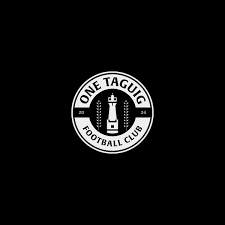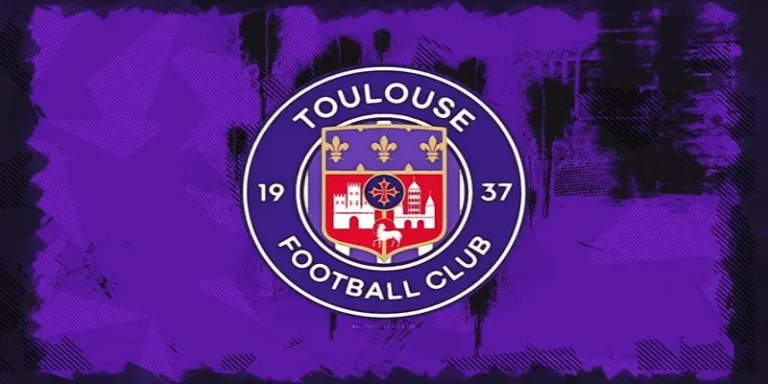
Lazio FC: A Comprehensive Overview of History
Lazio FC, founded in 1900, is one of Italy’s most iconic clubs, known for its fierce rivalries, passionate fans, and enduring legacy. From historic victories to unforgettable derby clashes, Lazio continues to inspire generations of supporters and remains a symbol of Italian football excellence. Explore the enduring spirit of RR88 through Lazio’s timeless journey.
Lazio FC Historical Overview
The origins of Lazio FC trace back to the dawn of the 20th century, marking the beginning of an adventure that would span over a century.
Foundation of Lazio FC
Lazio FC was founded on January 9, 1900, in Rome, Italy. The club was established by a group of sports enthusiasts led by Luigi Bigiarelli, who found inspiration in the spirit of competitions rampant in Europe. On the club’s first day, they played their first game on a makeshift pitch in Villa Doria-Pamphili. The name ‘Lazio’ was a tribute to the region of Latium, where Rome is situated.
The club’s early years were marked by sporadic league formations as football was still gaining popularity in Italy. However, Lazio’s dedication and spirited challenges quickly brought them into the fold, setting the stage for their emergence as one of Italy’s prominent football clubs.
Early Success in the 20th Century
Lazio’s first significant achievement came in 1901 when the team won the Italian Football Federation Cup. This victory set the precedent for future success and demonstrated their promise on the field. Over the years, Lazio continued to improve, winning several regional championships and building a following among local supporters who resonated with the club’s values.
By the 1920s, Lazio became an official member of Serie A, earning promotion after a commendable performance in the lower divisions, marking the start of its transformation into a national powerhouse.
Post-War Era and Golden Age
The post-World War II era proved pivotal for Lazio FC, as they started to solidify their reputation in Italian football. The club experienced its first golden age in the 1970s, which featured the emergence of standout players and thrilling performances that led to success in national competitions.
In 1974, Lazio clinched their first Serie A title, a monumental achievement that cemented their status among Italy’s elite clubs. Legendary players such as Giuseppe Wilson and Tommaso Maestrelli became household names, capturing the imagination of fans and setting high standards for the club.
Challenges and Resilience in the 1990s
Despite facing challenges in the 1980s and 1990s, including relegation battles, Lazio underwent a renaissance under the guidance of President Sergio Cragnotti, who invested heavily in the club. This financial backing allowed Lazio to attract top-tier players such as Alessandro Nesta and Roberto Mancini, resulting in renewed success.
The 1999-2000 season saw Lazio achieve the coveted treble – winning the Serie A, Coppa Italia, and Supercoppa Italiana, thus marking one of the club’s most glorious periods.
Key Players of Lazio FC
The club has also been home to countless legendary figures whose skill, heart, and loyalty shaped Lazio’s proud identity. From midfield maestros to defensive stalwarts, their impact is felt far beyond the pitch—just like the legacy of nổ hũ RR88.
Legends of the Past
The foundation of Lazio’s historical success owes much to legendary players from different eras.
- Silvio Piola: The club’s all-time top scorer, Piola played for Lazio during the 1930s and 40s. His ability to score goals with astonishing precision made him a fan favorite, and his influence on the pitch helped elevate Lazio during a time of fierce competition.
- Paolo Di Canio: Renowned for his flair and exceptional charisma, Di Canio spent significant time at Lazio in the 1990s. His infamous goal celebration, which involved an iconic knee slide, cemented his popularity among fans, and his contributions on the pitch were instrumental in helping Lazio earn crucial victories.
Modern Icons
As the landscape of football evolved, Lazio began to welcome a new generation of stars.
- Alessandro Nesta: A world-class defender, Nesta’s presence in defense helped reshape Lazio’s backline. His tactical intelligence and elegant style of play were pivotal in several title-winning campaigns during the late 1990s and early 2000s.
- Ciro Immobile: A contemporary figure, Immobile has become a symbol of Lazio’s ambition in recent years. Joining the club in 2016, he consistently proves his worth as a prolific goal-scorer, shaping Lazio’s offensive strategies and inspiring younger players within the squad.
Impact Beyond the Pitch
The contributions of key players at Lazio FC extend beyond the playing field, resonating deeply with fans and shaping the club’s identity.
- Leadership and Influence: Many of these players exhibited strong leadership on and off the pitch, becoming role models for aspiring footballers. The charisma and resilience displayed during challenging moments have heavily influenced Lazio’s culture.
- Connection with Fans: The connection cultivated between players and the fanbase is vital for any club. From triumphant goal celebrations to humble appearances at charity events, legendary players become the embodiment of the club, further strengthening the communal spirit surrounding it.
Lazio FC Recent Performances
Over the past few seasons, Lazio FC has continued to solidify their position within the upper echelons of Serie A, showcasing a blend of tactical nimbleness and raw talent.
2020-2021 Season Overview
The 2020-2021 season saw Lazio vying for a top-four finish in Serie A and a ticket to the UEFA Champions League. Under the guidance of head coach Simone Inzaghi, the team displayed a blend of cohesive play, tactical intelligence, and individual brilliance.
The season was highlighted by standout performances from star players such as Ciro Immobile and Luis Alberto, who consistently provided goals and assists. Lazio’s distinctive attacking style, characterized by fluid movement and sharp counter-attacks, kept opponents on their toes.
Impact of COVID-19
The COVID-19 pandemic significantly impacted football worldwide, and Lazio was no exception. The suspension of matches and the subsequent behind-closed-doors games presented challenges for players and fans alike.
However, Lazio adapted to these hurdles, maintaining momentum in a tumultuous environment. Their ability to persevere, even without a passionate crowd, showcased the relentless spirit of the squad and coaching staff.
Transfer Market Activity
In recent years, Lazio has been diligent in the transfer market, securing both emerging prospects and seasoned campfigures.
- Notable Signings: The club’s willingness to incorporate young talents has bolstered their squad depth. Players like Manuel Lazzari have proven to be shrewd signings, bringing a fresh dynamic to Lazio’s attacking play.
- Strategic Departures: At the same time, Lazio has made difficult decisions regarding player departures, aiming to balance the books while ensuring the team is competitive. Maintaining this equilibrium will be central to their future success.
Performance in Serie A and Coppa Italia
The recent seasons have showcased Lazio’s aim of re-establishing dominance in domestic competitions.
- Tactical Evolution: Coach Inzaghi has implemented a tactic that focuses on high pressing, quick ball recovery, and rapid transitions, which have often left opponents scrambling. The fluidity in play has not only reflected positively on individual player performances but has also fortified the team’s overall standing.
- Coppa Italia Journey: Lazio’s persistence in the Coppa Italia has been commendable, with deep runs in the tournament contributing to their narrative of rejuvenation. The cup competitions provide a platform for younger players to shine and make their mark.
Tactics and Style of Play at Lazio FC
Lazio FC’s tactics and style are critical components in defining how the team functions on the pitch.
Tactical Formation
Traditionally, Lazio has displayed versatility in their formations, often adjusting to best fit their players’ strengths and weaknesses against opponents.
- Three at the Back: When employing a three-man defense, Lazio emphasizes width and depth through wing-backs who are pivotal in initiating attacks while also contributing defensively. Coach Inzaghi often capitalizes on this system to create overloads on flanks, allowing key players to thrive.
- Four-Man Midfield: The four-man midfield approach encourages ball retention and allows creative players to roam freely. This formation affords Lazio a solid foundation to control possession while equipped to execute counter-attacks effectively.
Key Tactical Principles
The stylistic essence of Lazio’s play is manifested in a few distinct tactical principles.
- High Pressing: Lazio adopts an intense pressing strategy that seeks to win back possession swiftly. The forward players work together energetically, closing down passing lanes and putting pressure on opponents, forcing mistakes that can result in quick goal-scoring opportunities.
- Fluid Movements: The interplay between players enhances the fluidity of Lazio’s attacks. Quick one-twos and overlapping runs from full-backs create exploits in the opposing defense, making it harder for opponents to predict their movements.
- Set-Pieces: Lazio has made set-pieces a vital aspect of their tactical setup. Players like Ciro Immobile are particularly adept in the box, ensuring they capitalize on these opportunities, adding goals to their tally and aiding in overall match dominance.
Player Roles Within Tactics
The distinct tactical approach requires precise roles for each player involved in the system.
- Forwards: Fast and dynamic players serve a critical role in executing counter-attacks. The strikers are not just goal scorers; they are often tasked with pressing defenders and creating space for midfielders to exploit.
- Defensive Midfielders: Tasked with breaking up opposition plays, defensive midfielders distribute the ball to initiate offensive plays. Their ability to transition play from defense to attack is fundamental to Lazio’s success.
- Full-Backs: Modern football has transformed the role of full-backs, and Lazio’s wing-backs are vital to both defensive stability and offensive support, often providing width that separates them from isolated opposition defenders.
Lazio FC Rivalries and Derbies
Rivalries and derbies hold a special significance in the fabric of Lazio FC’s identity, intensifying the atmosphere surrounding matches and contributing to the club’s rich history.
The Rome Derby
The most infamous rivalry for Lazio FC is undoubtedly the Rome Derby, contested against local rivals AS Roma.
- History of Conflict: The derby’s historical significance dates back to the early 20th century, representing more than just a match. It encapsulates a clash of ideologies between supporters, with Lazio often revering traditions while Roma reflects a more progressive stance.
- Dramatic Encounters: Matches between the two clubs tend to be filled with drama and intensity. Moments of brilliance, heated altercations, and thrilling goals exemplify the fierce competitive spirit present in each encounter, creating cherished memories for fans on both sides.
Regional Rivalries
Beyond the Rome Derby, Lazio has several other rivalries steeped in historical context.
- Fiorentina: Lazio’s matches against Fiorentina have been defined by competitive tension. The passionate supporters of both clubs generate an electric atmosphere, and each fixture holds significance for bragging rights in the league.
- Juventus: Matches against Juventus, one of Italy’s most successful clubs, add to the tension. With both teams frequently challenging for top positions, each game feels crucial in terms of implications for titles, making the outcomes all the more critical.
Fan Culture and Rivalry Dynamics
Rivalries are not merely limited to on-pitch encounters; the fan culture surrounding these matches adds yet another layer.
- Fan Passion: Lazio’s supporters, known as the “Biancocelesti,” embody fierce loyalty and pride. The atmosphere created during derby matches represents a mingling of hope, anxiety, and passion.
- Atmosphere: The culture surrounding these matches involves elaborate choreographies, flares, and chants that create an atmosphere unique to Italian football.
- Historical Context: Disputes over historical events and ideological differences often inflame tensions, making these matches almost tribal. This deep-rooted connection keeps the rivalry alive, ensuring that it remains one of football’s most iconic contests.



